19 Gravel Backyard Ideas (Design Gallery)
The idea of gravel backyards is becoming increasingly common as time goes on. For one, it’s a gorgeous option that gives you a variety of choices in type, color, and even size which will allow you to create something truly one-of-a-kind and unique.
You can also use gravel to create a lower maintenance backyard that decreases your usage of water, fertilizer, and the need for mowing.
If you aren’t sure where to start, this guide will teach you everything you need to know about gravel backyards and ideas you can use for them.
How to Use Gravel In Your Backyard
When it comes to using gravel in your backyard, there are plenty of ideas out there. With a little creativity, you can come up with something unique and gorgeous.
Some common uses for gravel in backyards are walkways, patios, and fire pits. However, you can also use gravel to help create unique landmarks in your yard or as tools in creating a garden.
Even better, you can vary how your gravel backyard looks by varying the type, color, and size of gravel that you use. Even mixing and matching gravel can help you take a concept and make it far more dynamic and interesting.
Considering the realm of gravel and small stones Even if you’ve already done some looking around and research, the sheer diversity of options may astound you, especially when you pay a visit to a landscaping supplier. – Low-Water Landscaping For Dummies, Teri Dunn Chace
All in all, you have plenty of options when it comes to how to use gravel in your backyard. Converting single or multiple parts of your yard into gravel sections can add a dynamic touch to your yard as well as allow you to take advantage of the practical benefits of a gravel backyard.
Landscaping Gravel Types
If you aren’t familiar, there are far more gravel types than the typical gravel driveway. This gives you the chance to play around with different styles as well as take advantage of the various benefits of different types of gravel.
Crushed Granite
A familiar type of gravel is crushed granite. You’ll often see this type of granite offered in gray tones, but you can also purchase it in brown or tan. This is also a popular choice because it’s inexpensive and can be taken on as a DIY project.
Crushed granite is often laid down as an inexpensive patio. When spread out, it provides a stable surface that can work as a drought tolerant seating area, walkway, or rudimentary driveway. This type of gravel landscape is also frequently used around fences, trees, shrubs and flower beds as a decorative element.
Pea Gravel
Next, there’s pea gravel, which has a smooth, rounded texture. These low maintenance pebbles have a wide range of natural color variations so that you can play with colors in your design.
Pea gravel is very popular due to its versatility, low maintenance requirements, and low cost. Since its a very permeable material, it makes a good solution for drainage and pathways to help prevent water from accumulating.
Lava Rock
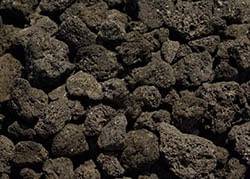
Lava rock is great for areas that need drainage. However, they do tend to attract heat which may overhead plants or become uncomfortable for bare feet.
River Rock
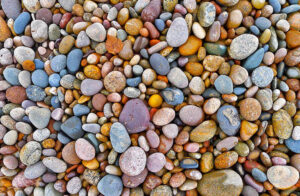
The range of sizes and colors is great for a variety of uses, such as edging or even pairing it with another material to use on a pathway.
This smooth rock is especially useful for areas with water features, drainage, or aquascaping due to its natural look.
The rounded stones provide a natural appeal that can mimic the look of a realistic-looking outdoor environment. They can be laid as a dry river for effective erosion control and give your yard a scenic look.
In addition, the smooth stones can promote a sense of calm when used in a zen garden or meditative space. A popular idea is to use different colors and patterns to create visual interest and add contrast to the design.
 Slate Chips
Slate Chips
Slate chips have a growing level of popularity and for good reason. You have plenty of color options such as blue, red, purple, and gray.
They’re particularly popular for use as mulch to limit weed growth and bug attraction.
Slate chips often measure from 1″ to 2″ across and pack well making them a good choice when a flat surface is needed.
 Glass Gravel
Glass Gravel
Finally, you have the option to use glass gravel. It might sound surprising but this type of gravel is made from recycled glass which is cleaned, broken down, and tumbled to get rid of the sharp edges.
It lasts a long time and you can purchase it in almost any color you might want and in a wide array of sizes.
Glass gravel is often used in rock rivers to give them the appearance of flowing water.
Decomposed Granite
Decomposed granite is the stunning result of what happens when granite is ravaged by time and weathering. It eventually flakes away and crumbles from its source – transforming into particles ranging in size – which can then be further crushed and screened to meet individual needs.
This all stems from feldspar, a component found in the granite that splits into kaolin clay when affected by water over time – leading to an impressive deconstructional masterpiece.
Crushed decomposed granite is sourced in abundance from over a hundred quarries nestled across the United States and Canada, with each region boasting its own unique chemical composition.
People often think of granite as just a material used for kitchen countertops or buildings, but did you know it’s also turned into decomposed granite with a range of uses? Despite its name, decomposing doesn’t weaken the stone. In fact, it can even become stronger.
Decomposed granite is tougher than marble, so it can hold up to your toughest applications – whether that’s a smooth patio design, between brick pavers, a baseball diamond, or playgrounds.
Even roads and other high-traffic areas won’t wash this material away – what with its superior drainage capabilities. It also has the added bonus of being aesthetically pleasing in landscapes and pathways alike.
Mexican Beach Pebbles
These volcanic beach river rocks, looking totally natural and coming from Baja, Mexico are a thing of beauty – round in shape with a luxuriously smooth texture and options varying from deep black to dark red or gray.
It’s no wonder these gems are so sought-after because the workers hand-picking them give their selection an extra special touch.
The Mexican government is cracking down on the use of machines to extract stones as a way to protect both beaches from exploitation and create jobs in coastal regions.
So, it’s no surprise these Mexican beach pebbles are something special – premium, high-end landscaping rocks picked one by one by hand.
Skilled workers sort them into various categories based on shades, shapes, sizes, and colors. Those same ocean waves that wash against their coasts are responsible for their smoothness, roundness, and flatness over time until an experienced worker collects them.
Moreover, Mexican beach pebbles give any home a sophisticated look and luxurious feel. Offering the gentle smoothness of ground stones that are virtually immune to weather, these timeless gems remain unaffected by rain, snowfall, or sunshine.
Construction Gravel
For homeowners looking to lay a foundation of any kind, from backyards and different types of driveways to walkways, construction gravel–or crushed limestone–tends to be their go-to choice.
In order for this material to become what it is used for, the process starts with quarrying much larger rocks and crushing them until they’re small enough to settle into place.
Selecting the perfect gravel for your next construction project, all comes down to examining the size and scope of said project, along with accounting for what will ultimately be sitting atop the pavers well after you are finished.
Of course, coarseness and size are two essential factors in determining the most ideal outcome—after all, it’s all in the details. But remember: lay a solid foundation now, so that when you’re ready to set those pavers in place later on down the line they’ll hold strong.
Riprap
Riprap is an assemblage of stones that work like a shield, stopping shorelines, bridge foundations, and steep slopes from being eroded due to scour or fast water – it’s damn near indestructible.
It looks way more natural than man-made materials, plus the size required varies depending on how steep the slope or how powerful the current is. We’re talking rocks ranging from four inches to over two feet. Without riprap in place, we’d be in trouble.
Moreover, Riprap’s tough character as a defense against water erosion is quite essential for shorelines that take the brunt of waves alongside lake edges, river bends, and other watery bodies.
Practically speaking, riprap anchors firmly into position in order to limit the power of water’s unforgiving force against its earthen border. In a life-saving fashion, it allows places like these to stand strong.
Gravel Sizes
Gravel comes in a variety of sizes, and those sizes can have a variety of uses. For instance, you might use them decoratively, while applications such as driveways often use different sizes of gravel in an effort to improve drainage.
If you’re new to buying or using gravel, the sizing can be confusing. The sizes aren’t always measured in traditional methods. For instance, you might see a size written as #9 Gravel or #67 Gravel.
Most suppliers that you can buy gravel from will break down these sizes in a chart or explanation, but once you learn what gravel size is, the concept is similar across the board.
As an example, gravel referred to as “pea stones” are about ¼” in diameter or even smaller such as #7, #8, or #89 Gravel. When in doubt, a reference chart goes a long way.
1/4 inch gravel is a good size to allow it to pack tightly and also provide the right amount of drainage when necessary.
Gravel Costs
The price of gravel depends on quite a few factors, such as the type of gravel you choose and additional costs like delivery and installation.
On average, though, gravel comes at a cost of about $60 to $75 for every cubic yard of coverage before additional costs are factored in. In square feet, this equates to about $1 to $3 per square foot.
If you’re having trouble calculating an estimated cost of your gravel, you can always rely on the help of a gravel cost calculator.
However, it’s important to take into consideration that buying from different suppliers and tacking on additional costs can change this estimate. When adding on spreading and installation costs, most workers charge around $40 to $50 per hour.
What Is The Best Way To Use Gravel In the Backyard?
Gravel is pretty versatile – like an artist’s brush that helps paint your very own outdoor masterpiece. Plus, it gives off a naturally enchanting aesthetic that’ll take your backyard from major drab to absolute fab.
Gravel can really spruce up your backyard, providing great practical and decorative benefits – the best way is to put its mighty powers to use by creating a stone mulch around the base of trees, fuchsia flowers, or whatever else is growing in your garden.
Always pick gravel with the right hue to bring unity among your hardscaping elements and backyard theme. You can meet with backyard landscapers or experienced contractors to help you with additional questions or provide information on the best materials for your ground cover.
What Are Some Good Gravel Landscaping Ideas?
Here are some awesome gravel-inspired ideas that will add personality and charm in no time:
• From vibrant gardens to whimsical walkways, gravel gives you an array of fun-filled possibilities for sprucing up your backyard. With its unending choices of color and texture, this material will bring life into any space, creating a unique look that’s exclusively yours.
• Creating walkways with gravel is one of the most excellent ideas for your backyard. Not only does a path add to the aesthetic appeal, but you can also be sure they’ll get some serious use.
Before you lay down the gravel, though, make sure you put in a strong border around it to keep everything secure and in place. DIY-ing this project will definitely save you a few bucks, too.
• Gravel is also a great option when adding either rustic or modern vibes, and it won’t cost you a fortune like other more involved masonry work. Gravel can be filled in between those pavers and create stunning types of patios that won’t break the bank.
You can lay down gravel around a pergola or gazebo structure instead of using dirt or grass for an attractive drought tolerate landscape. Add a fire pit, some trees, shrubs, and flowers with gravel borders to give shape to your ultimate backyard design.
By laying down an outdoor rug you can have a low-cost sitting area that the family can enjoy.
• Gravel is the perfect choice for driveways, boasting toughness and low-maintenance upkeep. Tucking it around trees, flowers, and veggies as ground cover works a treat, too – serving up some seriously good looks while keeping pesky critters away.
• Slipping through the cracks, gravel swoops in to save the day as a trusty drainage solution. By aiding rainwater permeation into the ground, it is able to prevent water cluttering and pooling efficiently.
What Is the Cheapest Gravel for Landscaping?
If you’re trying to add gravel elements to your backyard on a budget, you might want to look for the most inexpensive option. To give a wider estimate on gravel than the average, you can expect to spend close to $15 to $75 on a cubic yard’s worth of bulk gravel.
To get close to the lower end of that cost, you can opt for options such as sand, crushed concrete, crushed shells, and gravel mix which are around the $15 per cubic yard mark.
You’ll want to avoid more expensive options, too. This means veering away from designs including pea gravel and river rock, for example. Yet, even when you opt for cheaper materials, you can still create a gorgeous design.
For the cheapest option, you can find sources of free landscaping stones that can help you save money at the cost of your own labor.
How Much Gravel Do You Need?
The amount of gravel that you need will depend on the project you’re undertaking. It makes sense that if you’re covering a larger area, you’ll need more gravel.
In this case, you’ll want to use a measure of cubic feet rather than square feet. When you’re laying flooring, for example, you’re working on a flat plane, so the measurement of square footage is fine, but with gravel, you need to know how deep the pit of gravel will be.
While square footage is calculated by multiplying the length of an area by its width, you can calculate the cubic area with the following equation:
Cubic square footage = length x width x depth
You can find out these measurements by simply using a tape measure in the areas that you want to cultivate.
How Much Does a 50-lb Bag of Gravel Cover?
The answer to this depends on the type and size of gravel in the bag. For example, let’s take a look at pea gravel.
If you have a 50-pound bag of pea gravel, you can cover about 0.5 cubic feet of space. So, for every two 50-pound bags of pea gravel that you have, you can cover a full cubic foot of space.
It’s important to note that the bag you’re looking at might have a line on it that’s fairly misleading. If you see that a bag of pea gravel promises to cover a certain amount of square footage, there’s an element missing from the project.
Remember, square footage is calculated using lengths and width. Cubic footage accounts for depth – an important measurement when it comes to gravel. As such, always rely on the fact that a 50-pound bag of pea gravel will cover 0.5 cubic feet, not specific square footage.
Landscape Fabric Under Gravel
You can use fabric under gravel for a few different reasons. For one, it gives you a flat surface to start laying gravel on without your rocks sinking into the dirt. In addition, fabric beneath your gravel can offer extra benefits, such as preventing weeds.
To lay down landscape fabric under gravel, you’ll want to start by removing about three or four inches of soil. After you’ve created this surface, you can lay down the fabric and then start to lay down your gravel.
You will want to make sure you anchor the fabric in place – don’t just rely on the weight of the gravel to hold it down! Instead, make sure to install anchors like landscape staples to hold the fabric in place.
You’ll also want to look for landscaping fabric for this purpose. If you just lay a tarp down, you won’t get the same results.
What to Put Under Gravel to Stop Weeds
One of the best ways to prevent weeds in your gravel backyard is to make sure you use a weed barrier for the landscape fabric underneath where you lay your gravel. This will help prevent weeds from growing up in between the stones.
You can also prevent weeds by thoroughly weeding the area you’re about to lay gravel on before you even lay out your weed barrier.
Combining these two preemptive measures is sure to reduce the struggle you have with weeds in your newly renovated backyard.
How Can I Make My Gravel Layout Look More Attractive?
If you have been wondering how to make your boring outdoor structures look more inviting, keep in mind that there are a few simple tricks to bring it back to life. You can start by throwing down some vibrant blooms for bursts of color and scent.
Moreover, you can also add decorative elements such as bird baths or wind chimes that will fill the space with delightful soundscapes.
Spruce up your outdoor area with carefully placed potted plants, hanging lights, or relaxing hammocks – anything that gets you out from inside and enjoying nature’s beauty.
What Are Some Tips For Using Gravel In My Backyard?
• Blend different sizes and types of gravel for some real visual appeal. Adding potted plants, outdoor furniture, or garden statues here and there will create some stunning focal points.
And don’t forget about the outdoor lighting – strategically placed lamps can bring out the colors and textures in your hardscape.
• Figure out what kind of look you’re going for. Do you want it completely covered in large pebbles? Just accenting around the edges? Knowing this will give you an idea of how much and what type of gravel to buy.
• Bear in mind any drainage challenges – if your yard is particularly wet or prone to flooding, coarse gravel won’t work as well since it doesn’t hold moisture too effectively.
• Choose a color scheme carefully – depending on sunlight levels and other elements like plants or furniture around it, certain hues can make the space dark and foreboding while others bring life and vibrancy.
• The combo of flagstone or pavers and gravel can give ya an eye-catching pathway, plus it’s way easier to maintain than filling up the gaps with ground covers.
• Whether it’s light, dark, or in between, be sure to pick the perfect pebble hue that complements those precious stones. For the best result, kick things off with a thick layer of tightly compacted base rock to avoid any stray gravel mishaps.
How Can I Make Sure My Gravel Area Is Safe For My Family And Pets?
Although ensuring safety can be time-consuming, here are a few precautions that will help everyone play it safe in the yard:
• It’s essential to protect your family’s safety in the backyard by routinely looking out for any stones that could cause falls and hurts.
Not only should you search for obstacles, but creating proper drainage is also necessary to avoid water buildup.
• Clear away any spoils or dangers. To top it off, night-time lighting is key for when the sun goes down so visibility isn’t an issue. With these steps, you can keep everyone sound and secure in their own outdoor oasis.
• Always check for any sharp objects such as stones and branches that could poke or scratch you or your beloved pets.
• Keep areas clear of overgrown vegetation so fallen leaves or sticks don’t create any trip hazards; this should eliminate cover-up surprises like hidden forest critters.
• When picking out landscaping rocks, think carefully about your pet’s paw size. Going too big can cause discomfort for them, or potentially getting wedged if they’re small enough.
And just because dark stones look nice doesn’t mean you should get them; on those hot days, they can become extremely hot. On the other hand, smooth river rocks are much safer.
• In addition to providing designated potty spots, many owners utilize wood chip or mulch beds, crushed gravel, or pebbled surfaces that can absorb urine and keep it away from plants.
If you’re looking for an easy-to-clean option with extra bacterial protection, fake turf works great in these types of areas.
What Are Some Common Problems With Gravel Landscapes?
Heat can be magnified significantly by the use of gravel, and this is an often overlooked fact. The heat that rampages through your garden like a wildfire is not limited to just grasses and soil but easily bolstered by its subtle partner in crime, which is gravel.
The glaring sun and sweltering heat quickly also turn your gravel yard into an oven, trapping the warmth – making it too hot for your taste. Needless to say, there’s no escaping this miserable situation throughout the day.
Also, no matter how hard and robust something may initially seem, given enough time, gravel will eventually succumb to the forces of nature and take its place among smaller beings.
Gravel may never rot the way organic mulch does. However, it can still plunge deep into the earth and create a brutally rocky landscape if you decide to plant something down the road.
How Can I Avoid These Gravel Problems?
To steer clear of the usual headaches from having a gravel yard – like heightened heat and sinking stones – you can take action:
• Try layering mulch or soil on top so that the hot rays don’t penetrate right away while at the same time offering some cushion for your feet. Or if water ends up pooling in certain areas often, you can consider making those spots higher by adding additional gravel.
• Go for gravel in a lighter hue – it’ll show the sun some love by reflecting its rays instead of absorbing them, keeping your outdoor spaces and home nice and cool.
• Going bigger on the gravel size really pays off – it gives more room for air to pass through, so excess heat won’t build up. Most importantly, though, it’s a no-brainer if you wanna keep your area nice and cool.
• You may want to slip some landscape fabric underneath your gravel layer so that it doesn’t sink down into the soil – that’ll keep a level surface and ensure the stones don’t mingle with the dirt below. That way, you can be sure your setup won’t get wobbly or uneven.
• Having shade is a must when it comes to outdoor spaces – nothing beats the relief from that blazing sun. Take advantage of trees, pergolas, and umbrellas to give you all the coverage you need without having an unbearable heat build-up in your gravel area.
For more related gravel designs visit our gallery of gravel patio ideas.

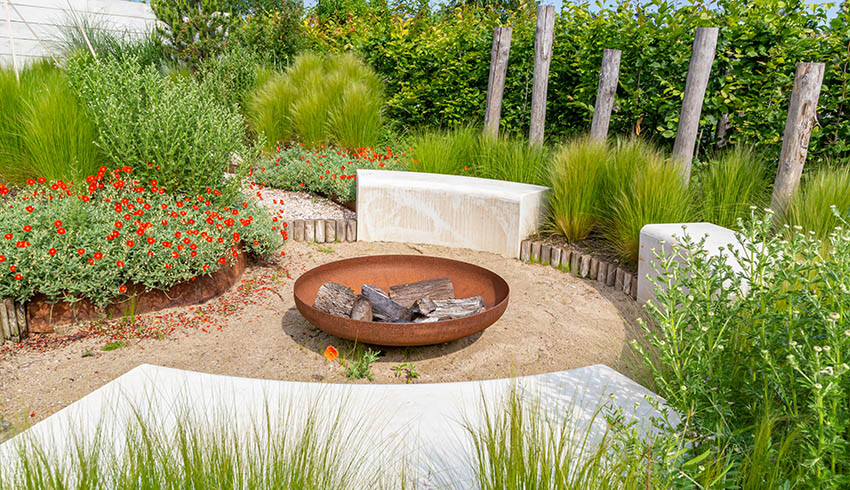
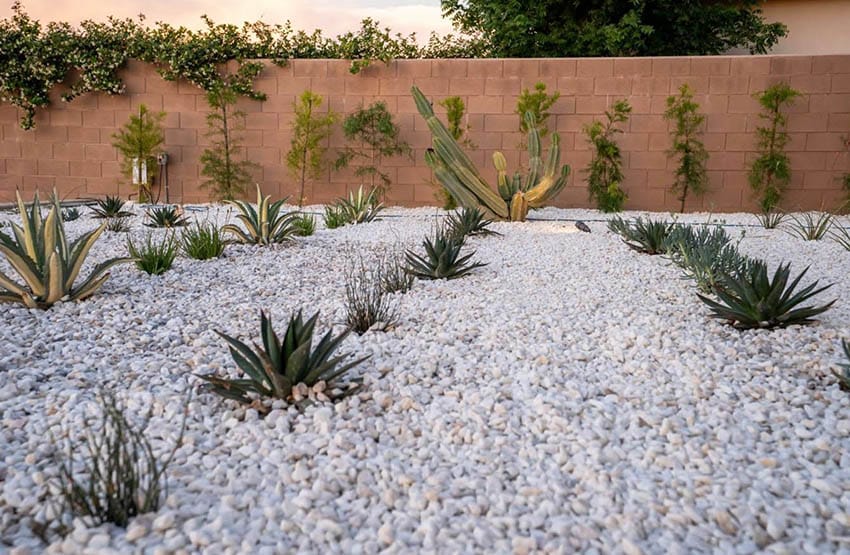

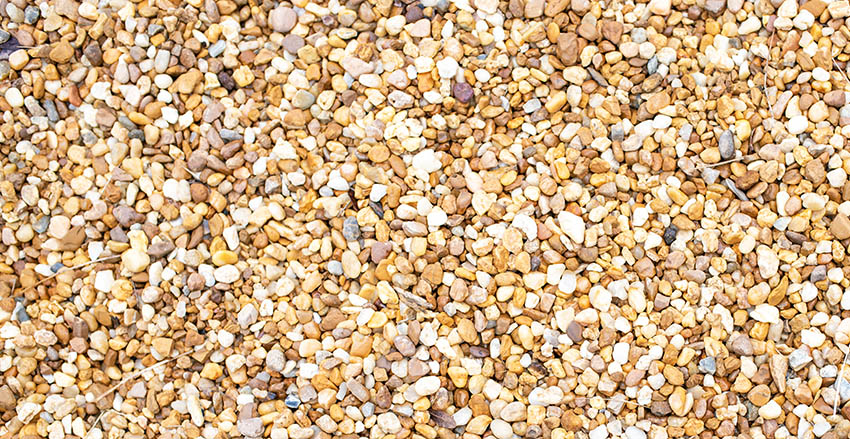
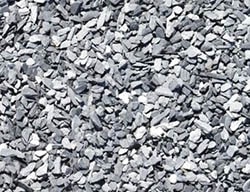 Slate Chips
Slate Chips Glass Gravel
Glass Gravel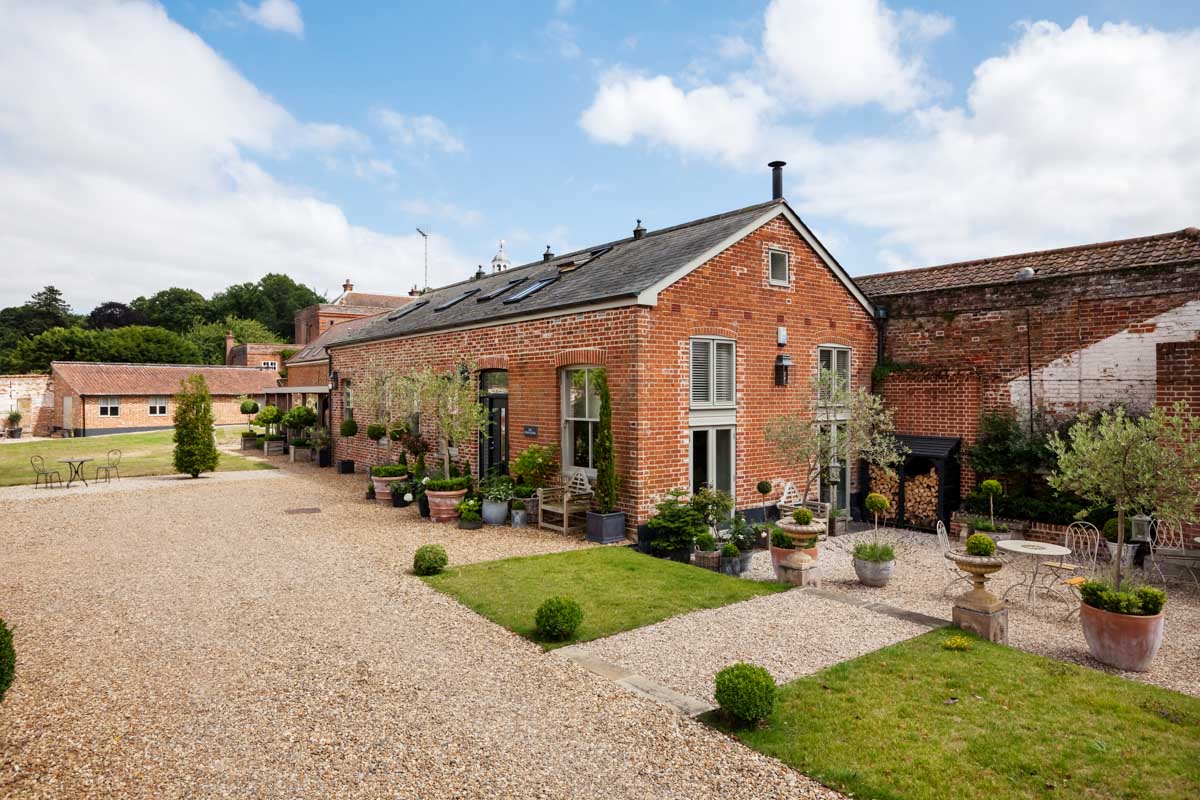

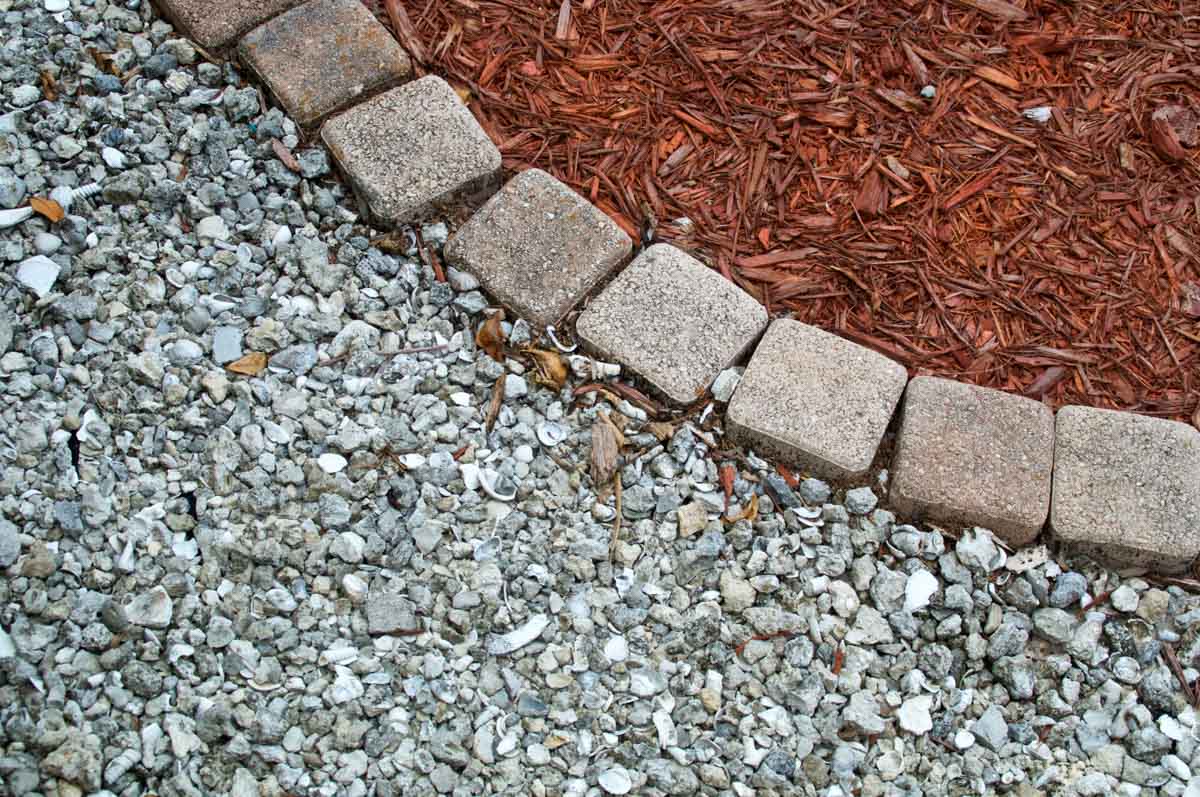
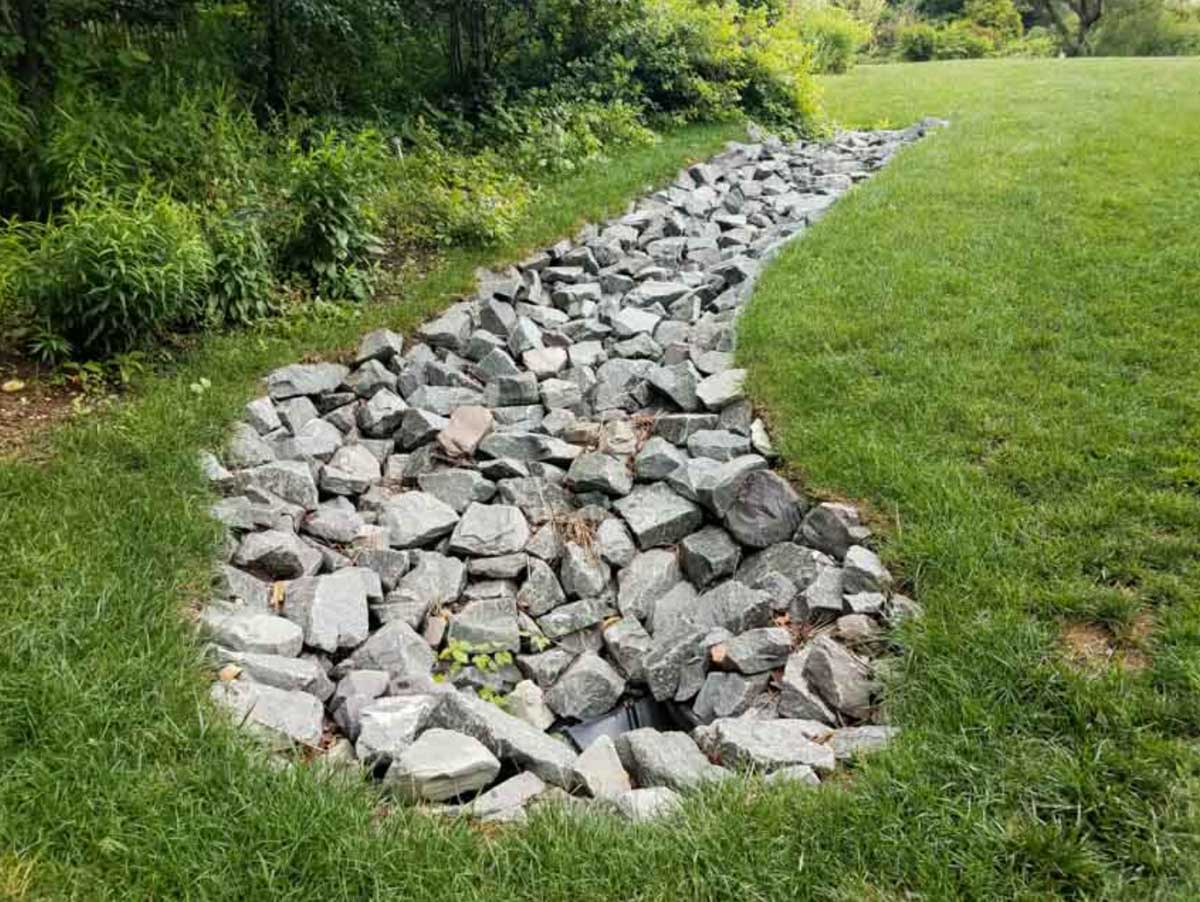
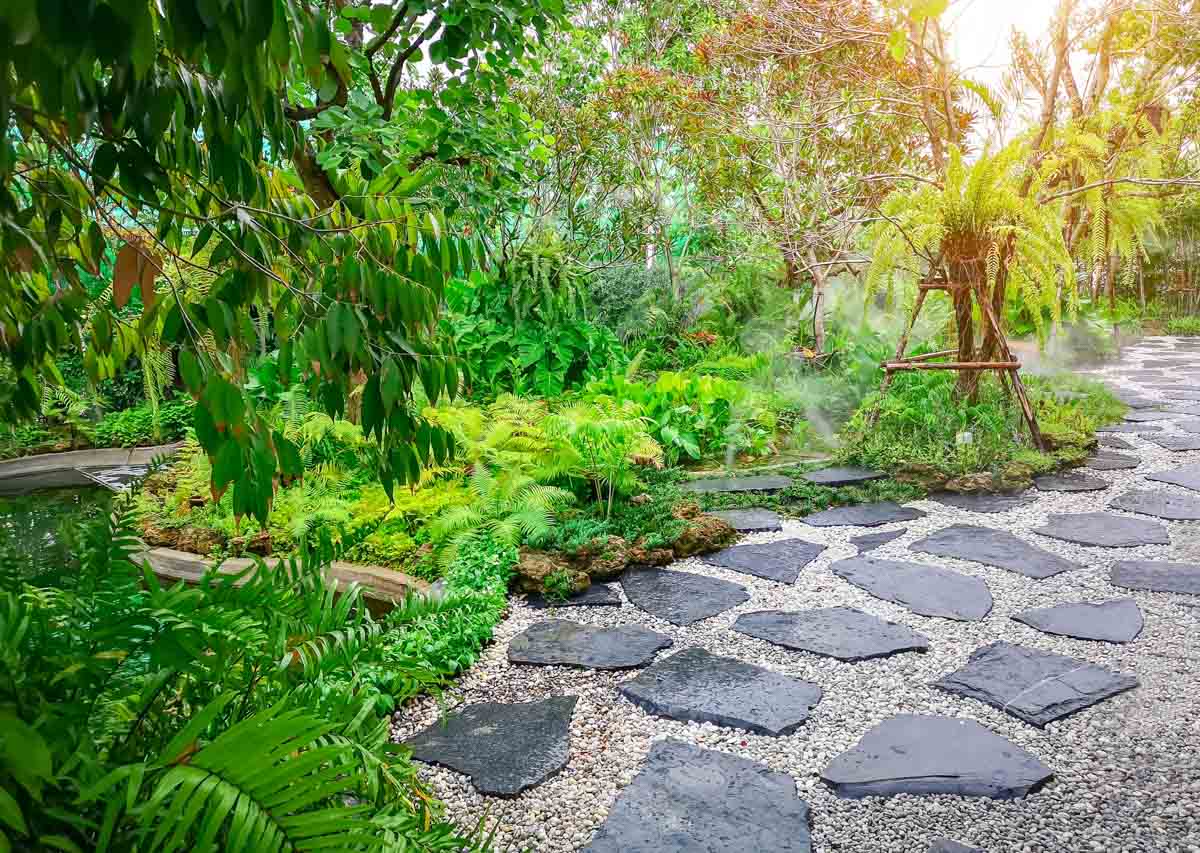
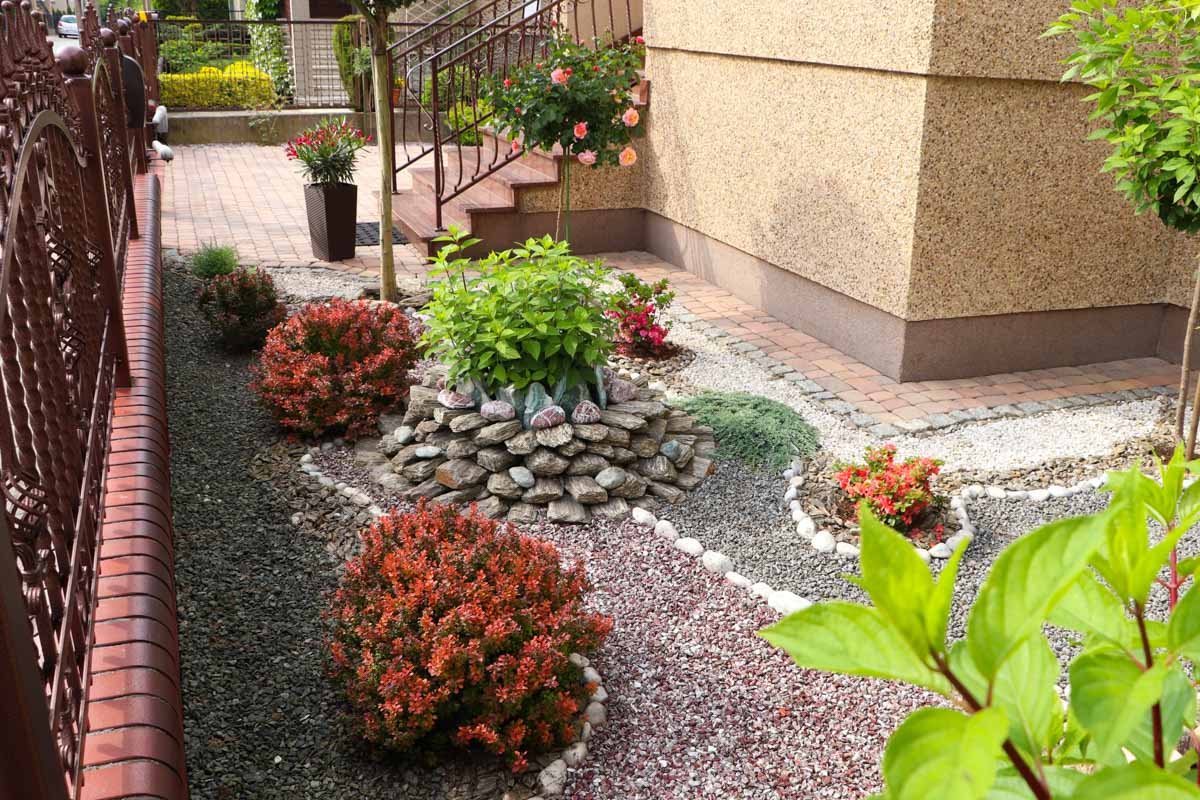
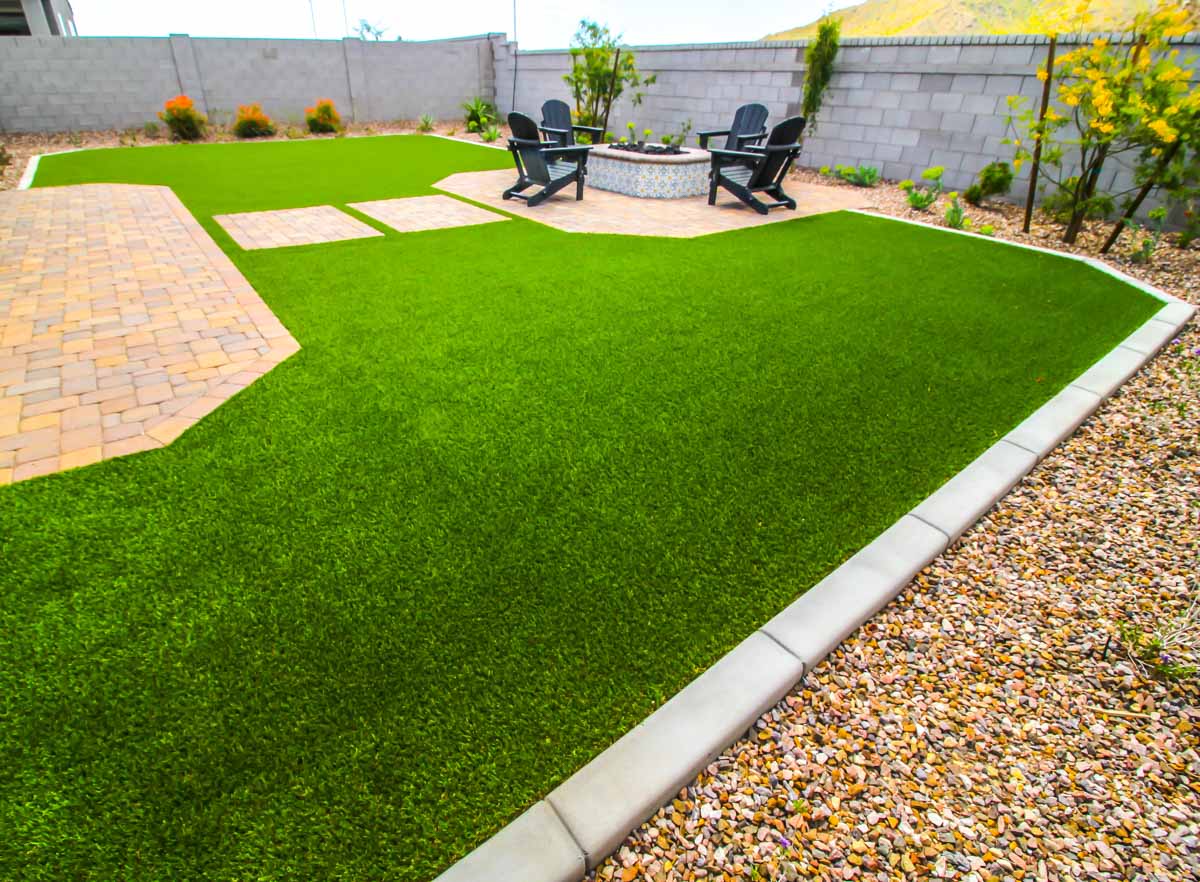
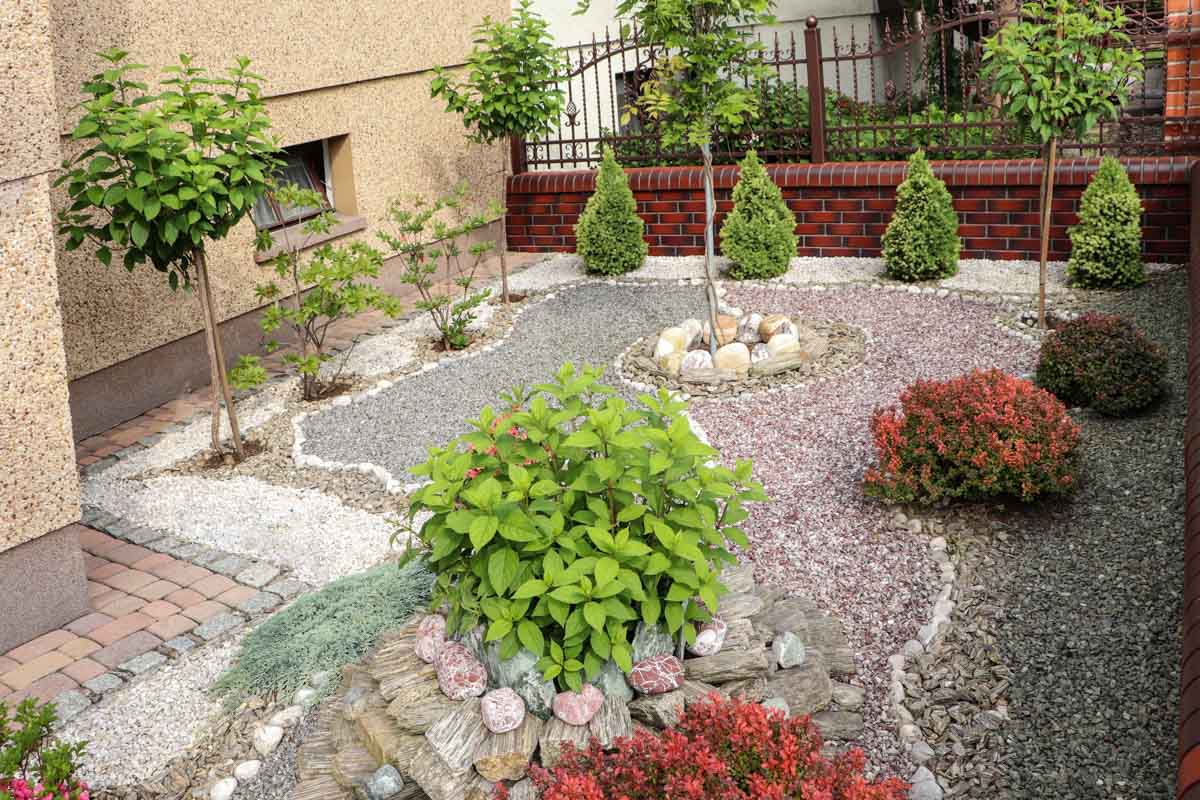
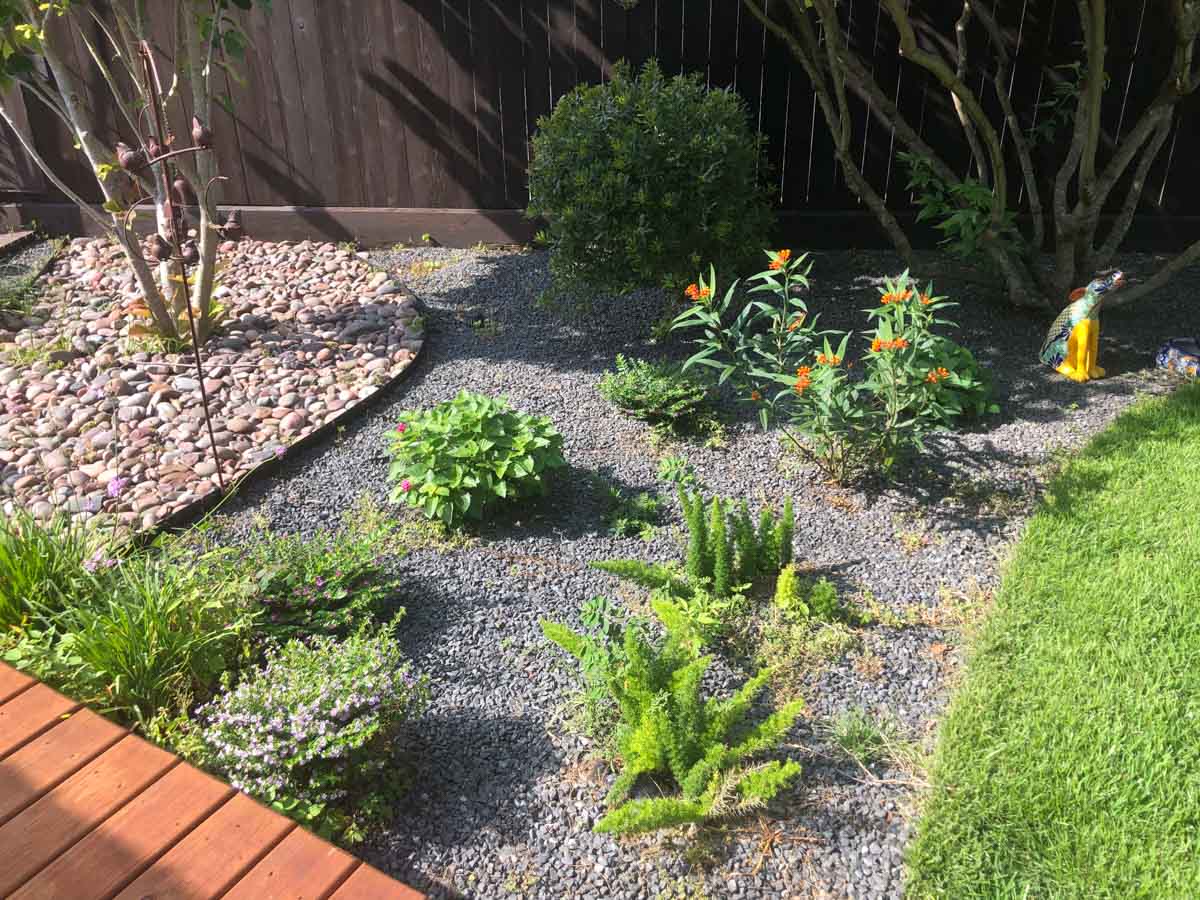
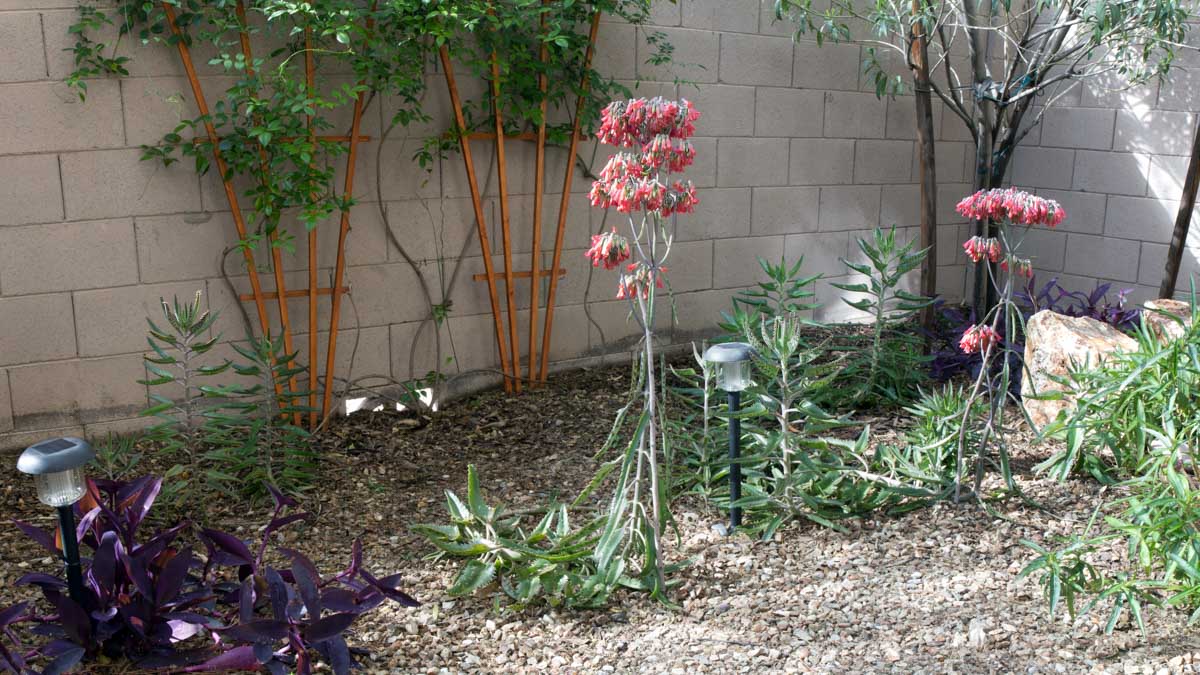

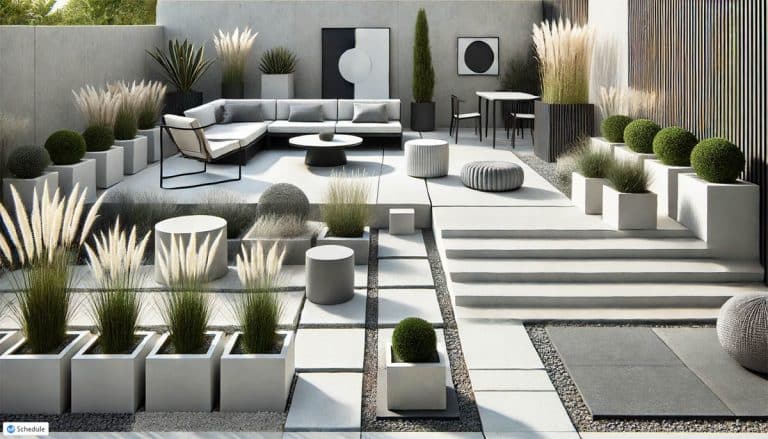
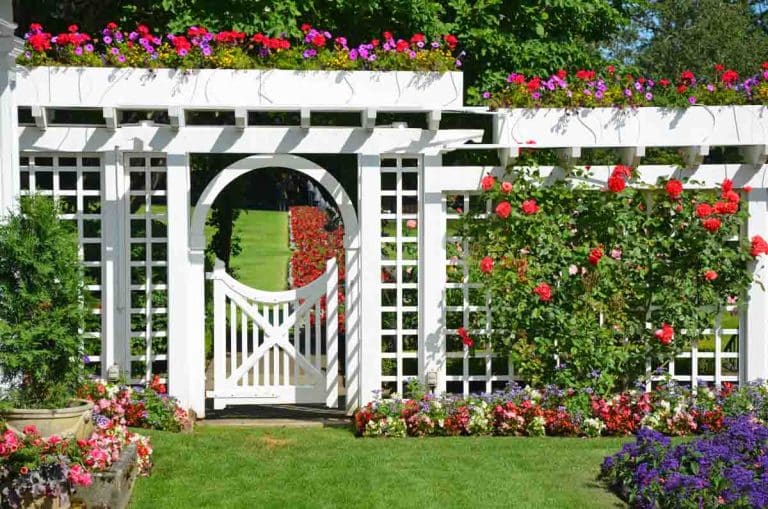
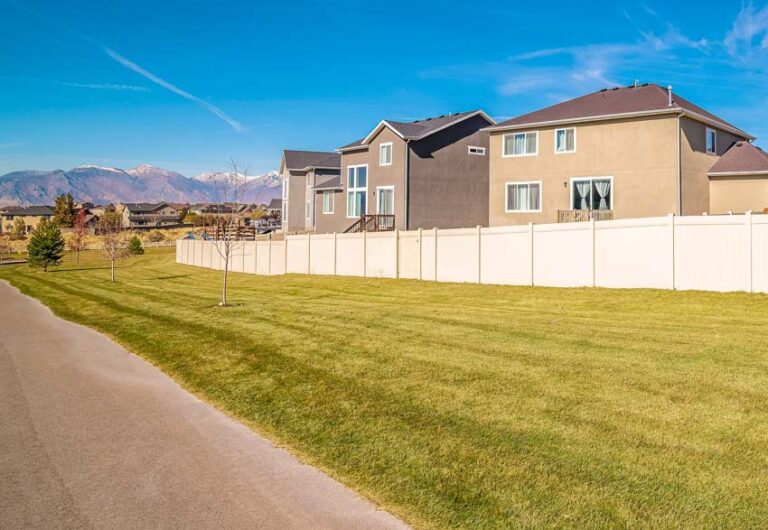
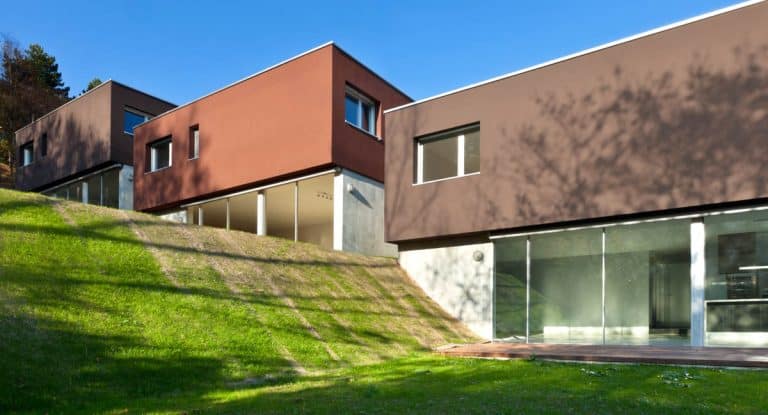
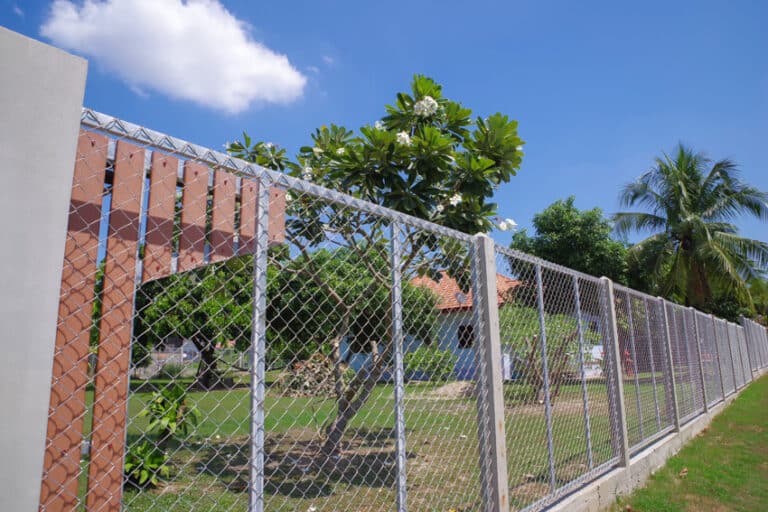

Thank you so much for talking about how to prevent weed growth when you work with gravel. Since weeds are a big source of trouble for homeowners with large landscapes, I figured I should do everything I can to prevent them from showing up at all. I’ll take this into account and make sure to mention weed barriers when I work with a landscaping company that does gravel arrangements.